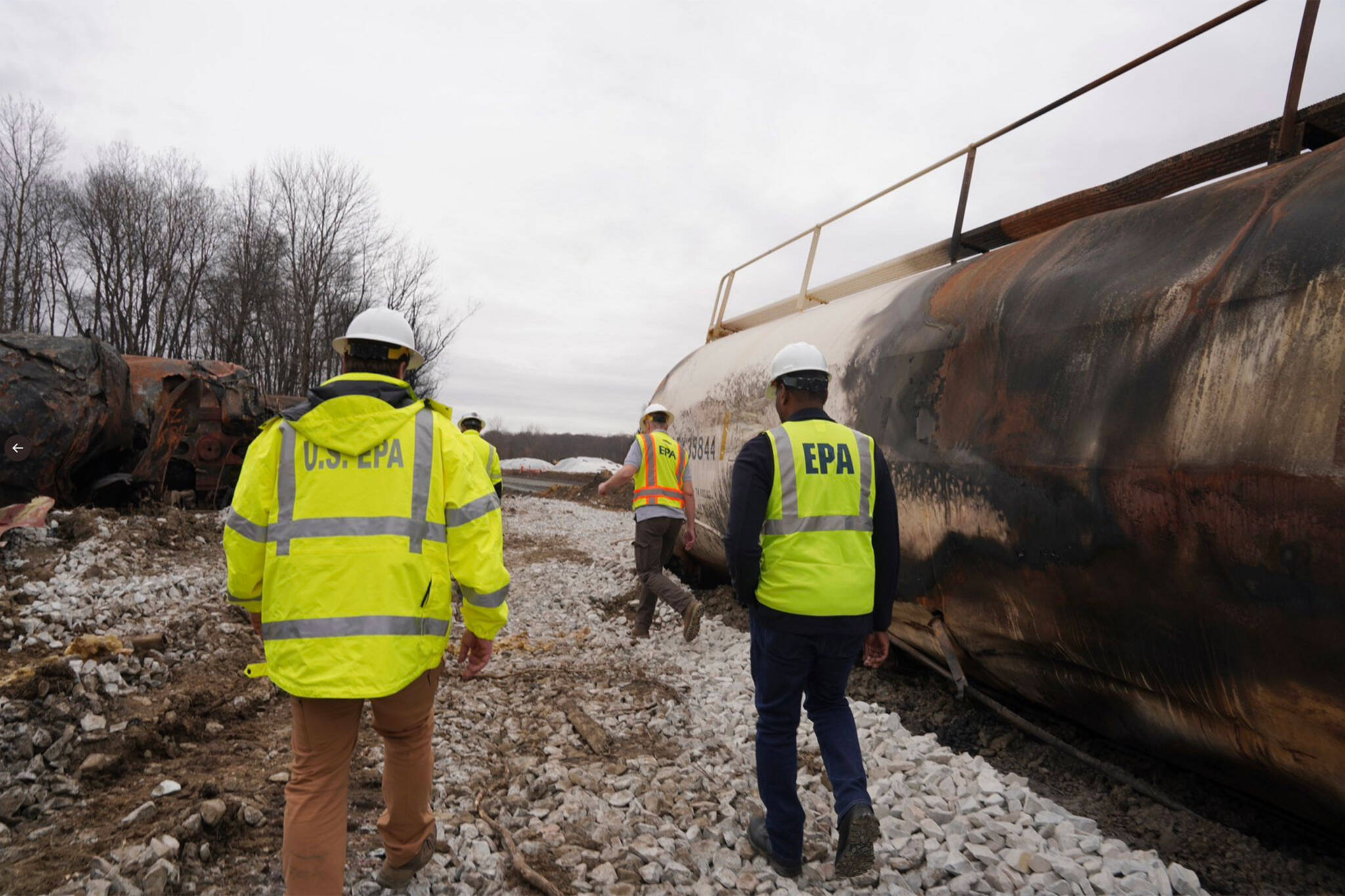
What to know about the toxic chemical spill in Ohio and its effect on Ontario
Although it's been almost three weeks since a train derailment and subsequent toxic chemical spill in Ohio, many local residents and Canadians living on the northern shore of Lake Erie remain concerned about its long-term health risks.
On Feb. 3 at 8:55 p.m., approximately 50 Norfolk Southern freight train cars carrying hazardous materials, including vinyl chloride, derailed in East Palestine, Ohio.
OHIO CHEMICAL SPILL
— The_Real_Fly (@The_Real_Fly) February 14, 2023
pic.twitter.com/WY4mZjxHPS
Residents within a one mile radius of the derailment were evacuated as the freight train continued burning for over two days.
The Norfolk Southern Railroad planned a controlled release of the vinyl chloride on Feb. 6, which created a thick black cloud above the crash site.
Four days after the crash, East Palestine residents were given the all-clear to return to their homes, although many were hesitant and questioned the toxic smoke's long-term effects on their health.
To those in Ohio, be careful with the tap water you drink for the next few weeks. The train explosion and chemical spill recently has contaminated the Ohio River. Also, keep your umbrella on you for the next few weeks when it rains, because of acid rain. pic.twitter.com/PDFk4gmdAd
— Ohio Democrats for Change🇺🇦 (@ohiodems4change) February 15, 2023
In a press conference last week, officials in Ohio said testing in the immediate area showed safe air quality levels, but could not provide long-term risks for neighbouring regions.
The Ohio Department of Natural Resources said the chemical spill killed an estimated 3,500 small fish across 12 kilometres of streams.
Dead fish being pulled out in Ohio after the train wreck and chemical spill. But you will be ok says the TV pic.twitter.com/x5nTZQ7XYq
— Joe Porche (@jporche944) February 13, 2023
However, officials assured local residents that most of the chemicals in the spill were volatile organic compounds (VOCs) that humans come into contact with on a daily basis.
Despite the crash site being approximately 380 km south of Niagara Falls, many Canadians living close to Lake Erie are concerned about the chemical spill's long-term effects.
i don’t think people truly understand how horrifying the East Palestine Ohio chemical spill is. East Palestine is VERY close to Lake Erie. This has the potential to contaminate the largest source of drinking water in North America
— Cam (@cambionical) February 12, 2023
People have been posted videos on social media but so far a lot of what has been shared is just misinformation.
People in Ontario, Canada are posting videos online stating that they believe that the contamination seen in East Palestine, Ohio have spread to Canada. pic.twitter.com/AZ5bB4Qguu
— Marie Oakes (@TheMarieOakes) February 19, 2023
Last week, Envrionment Climate Change Canada told Global News regions in Canada were "highly unlikely" to see any impacts from the derailment and suspequent chemical spill.
"Typically, the chemical involved in the controlled release to the air, vinyl chloride, only lasts in the atmosphere for less than 24 hours. With Southern Ontario being directly north and northwest of the event location, and with the prevailing winds being from the west and southwest, it would have been highly unlikely that the region would have seen any effect," the statement said.
Laura Deakin, a lecturer at the University of Waterloo's chemistry department told CTV News Kitchener that while she expects lung injuries or "additional effects" from East Palestine residents, Ontario residents might not need to worry.
"While the toxins could travel in the air towards [southern Ontario], they should have little effect on people locally," Deakin said. "These chemicals would travel with the air, but would they be of a sufficient concentration to cause effects at hundreds of kilometres of distance? I don't know if that would be the case. I would think not."
Environment Climate Change Canada also said it's working with the U.S. Environmental Protection Agency and the Ontario Ministry of the Environment, Conservation and Parks to monitor the situation.
Latest Videos
Latest Videos
Join the conversation Load comments







